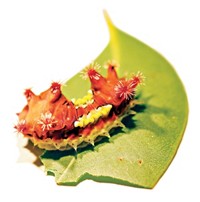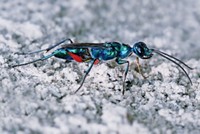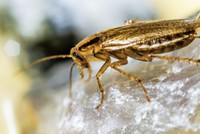Advertisement
Grab your lab coat. Let's get started
Welcome!
Welcome!
Create an account below to get 6 C&EN articles per month, receive newsletters and more - all free.
It seems this is your first time logging in online. Please enter the following information to continue.
As an ACS member you automatically get access to this site. All we need is few more details to create your reading experience.
Not you? Sign in with a different account.
Not you? Sign in with a different account.
ERROR 1
ERROR 1
ERROR 2
ERROR 2
ERROR 2
ERROR 2
ERROR 2
Password and Confirm password must match.
If you have an ACS member number, please enter it here so we can link this account to your membership. (optional)
ERROR 2
ACS values your privacy. By submitting your information, you are gaining access to C&EN and subscribing to our weekly newsletter. We use the information you provide to make your reading experience better, and we will never sell your data to third party members.
Natural Products
Cone snails lure prey with faux pheromones
Venom analysis also shows snails from shallow and deep waters may be separate species
by Celia Henry Arnaud
March 12, 2021
| A version of this story appeared in
Volume 99, Issue 9

Cone snails use venom when hunting their prey. While much is known about the peptides in cone snail venom, the small molecules it contains have until now not been well characterized—especially in those snails that hunt worms instead of fish. Eric W. Schmidt, Zhenjian Lin, and Joshua P. Torres of the University of Utah and coworkers have isolated and characterized small molecules found in the venom gland of the imperial cone snail, Conus imperialis (Sci. Adv. 2021, DOI: 10.1126/sciadv.abf2704). Two of the compounds, conazolium A and genuanine, mimic ovothiol A and urate, which are mating pheromones from Platynereis dumerilii worms. The worms usually hide in tubes and crevices. The researchers propose that the snails use these faux pheromones to draw the worms out where they can be caught. More research is needed to verify how the compounds fit into the snails’ hunting strategy, however. The researchers’ results also suggest that snails that dwell in deep and shallow waters are actually separate species. They were unable to isolate conazolium A from shallow-water C. imperialis specimens. Instead, those specimens produced neurotransmitters like serotonin in their venom, which implies that they have a different hunting strategy.






Join the conversation
Contact the reporter
Submit a Letter to the Editor for publication
Engage with us on Twitter